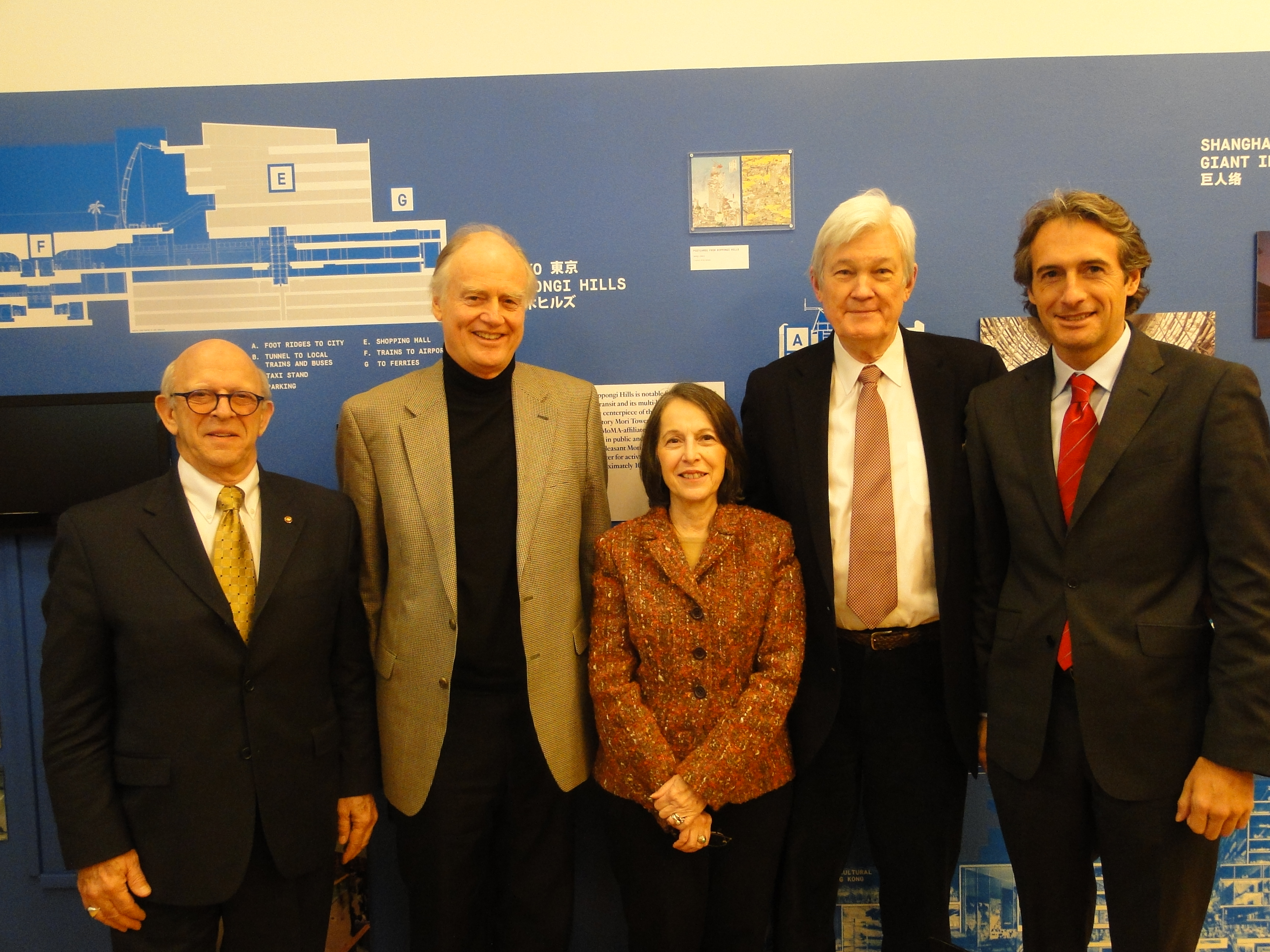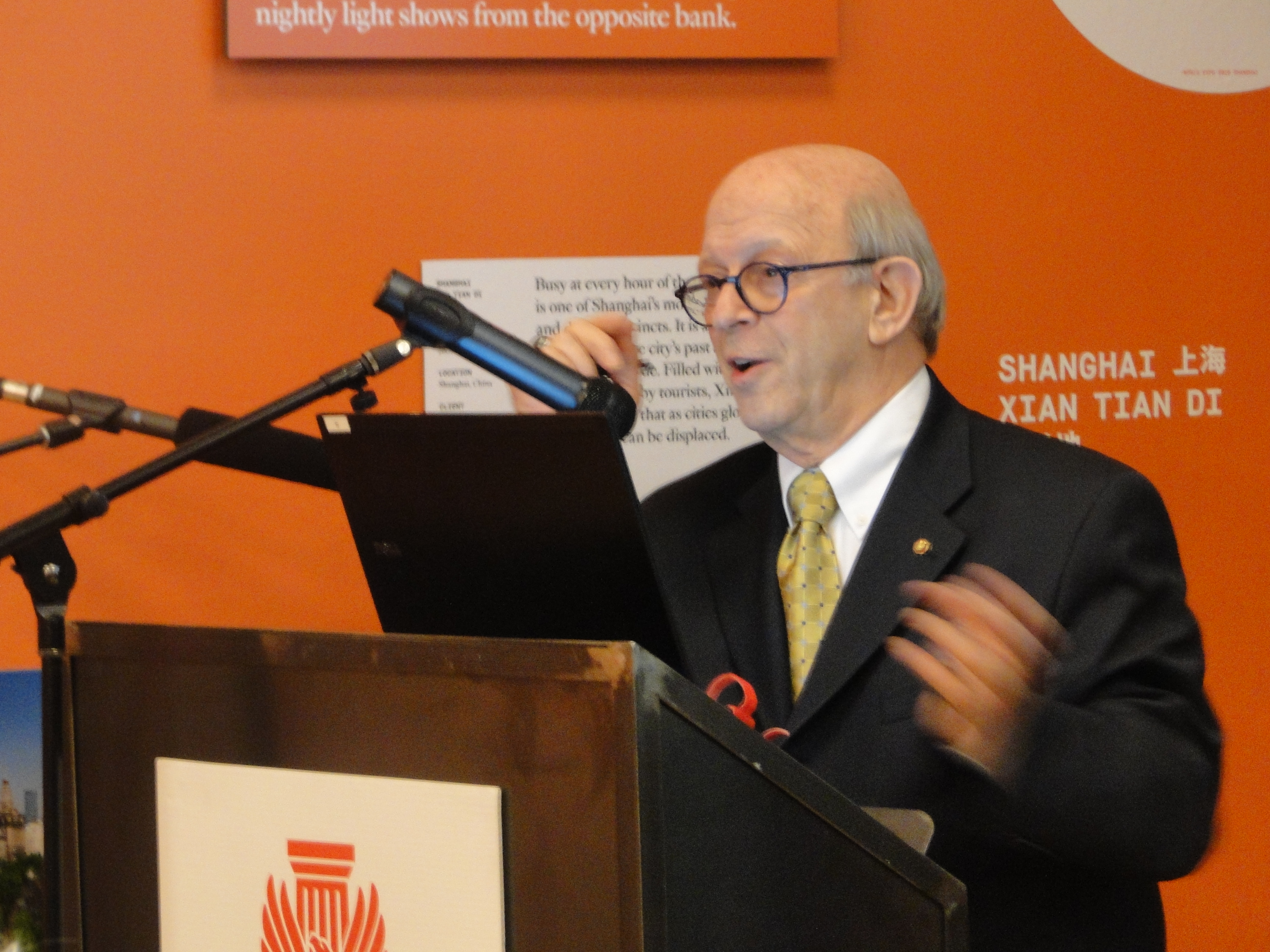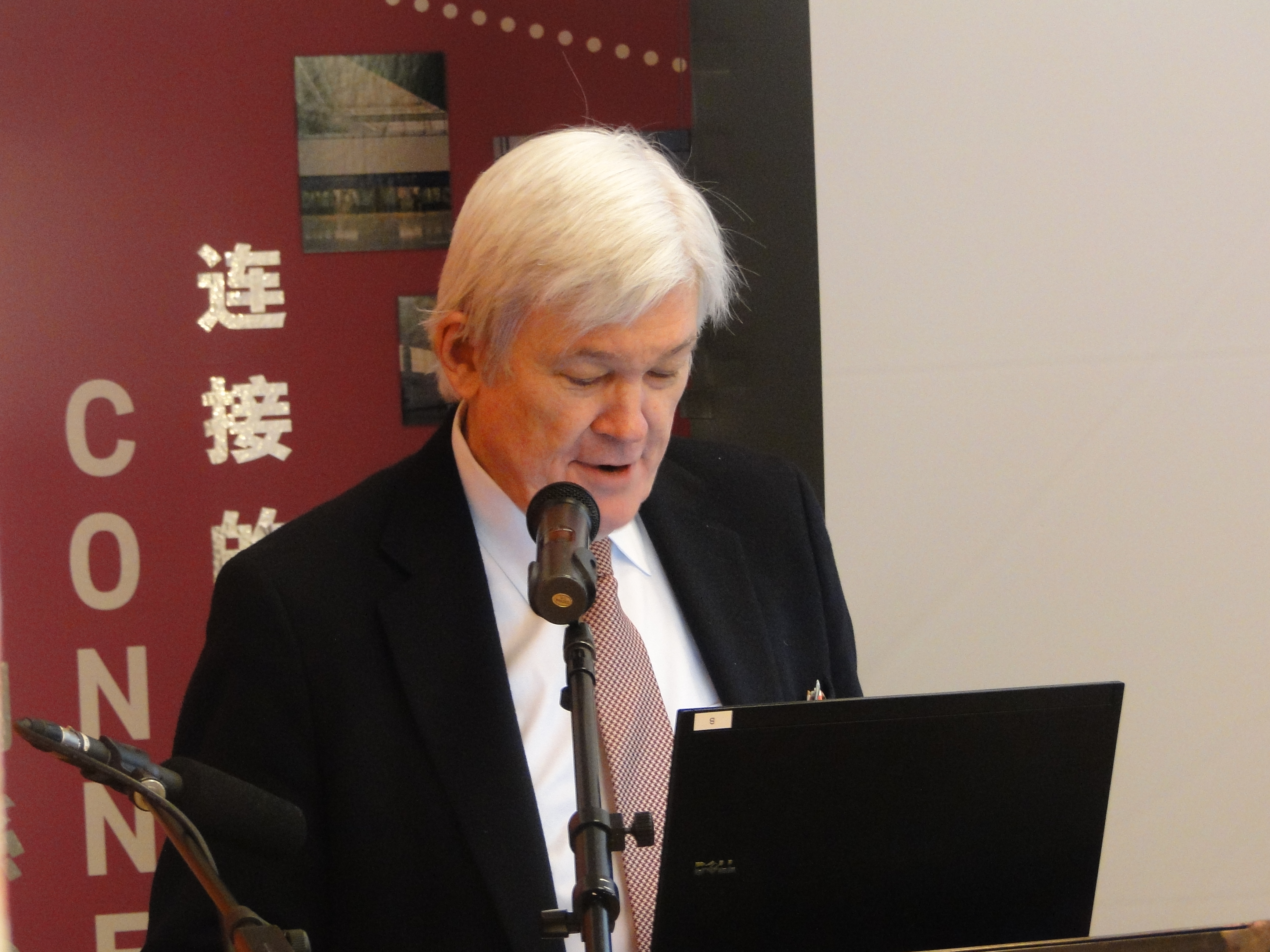by Greta Hansen
Two mayors and a university professor met at the Center for Architecture on 12.12.13 to discuss the changing nature of cities in the wake of technological advances. The theme of the evening was simple: cell phones, their ubiquity, the opportunities they present, and the demands they place on cities to respond. AIANY 2014 President Lance Jay Brown, FAIA, commenced with a statistic on the world population of 7.13 billion, citing the number of cell phones in the world as a close second to that number. In fact, the number of cell phones is expected to exceed the world’s population by next year (Silicon India).
The story of Santander, Spain, a test case for technological experiments by the European Union and large corporations, was presented by Íñigo de la Serna, mayor of the city of about 180,000. The smaller population size, said de la Serna, allows it to act as a petri dish for what may someday be commonplace urban applications: taxis that take a toll of environmental conditions, plazas that report back noise pollution, soil that reports its level of humidity, streetlamps that are triggered by pedestrian movement, sensored storm- and waste-water systems, and available parking spots – all accessible from a smart phone. This information, which is often available piecemeal in other cities, is more comprehensive in Santander, and the city is trying to find ways to sync the data.
But according to de la Serna, business interests will inevitably control what data is mined and what isn’t. Large companies like Telefónica are interested in experimenting with initiatives that have the possibility of generating revenue. That means data like the decibel level in a town square may not be as viable as knowing how long it will take the bus to arrive, which is something that citizens may want to pay for.
Urs Gauchat, dean of the College of Architecture & Design at New Jersey Institute of Technology, reminded us that a few years ago none of what Santander is undergoing would have been imaginable. But, he said, in a few more years citizens will demand this information. He responded with a bleak fact: in a world where 6.8 million people have access to a cellular phone, only 4.5 million have access to a toilet. “It is not possible to make a homogenous solution” to the problems of cities, he said.
What would this mean for a city without the economic resources of Santander? Jacqueline Moustache-Belle, mayor of Victoria, capital of the Seychelles, and co-president of the United Cities and Local Governments (UCLG) of Africa, has a different host of problems to solve than the Cantabrian city of Santander. For her, “a smart city is not necessarily a high-tech city.” What, then, does it mean to be a smart city? For Gauchat, the question is not about smart cities at all, but smart citizens.
Greta Hansen is a New York-based architectural designer and writer.
Event: Smart Cities, An Opportunity for the Citizen
Location: Center for Architecture, 12.12.13
Speakers: Lance Jay Brown, FAIA, ACSA, Distinguished Professor, Spitzer School of Architecture, City College of New York (CCNY), and 2014 AIANY President (opening remarks); Íñigo de la Serna, Mayor, Santander, Spain, President, Spanish Networks of Smart Cities and the Cities for Climate, and President, Spanish Federation of Municipalities and Provinces (FEMP); Jacqueline Moustache-Belle, Mayor, Victoria, Seychelles, and Co-president, United Cities and Local Governments (UCLG); Michael Anthony Nutter, Mayor, Philadelphia; James McCullar, FAIA, Co-chair, Consortium for Sustainable Urbanization, Past AIANY President, and Principal, JamesMcCullar Architecture (moderator); Urs Gauchat, Dean, College of Architecture & Design, New Jersey Institute of Technology (closing remarks)
Organizers: Center for Architecture
Sponsors: Consortium for Sustainable Urbanization, AIA New York Chapter, UN Habitat, United Cities and Local Governments, and the Spanish Agency for International Cooperation and Development


